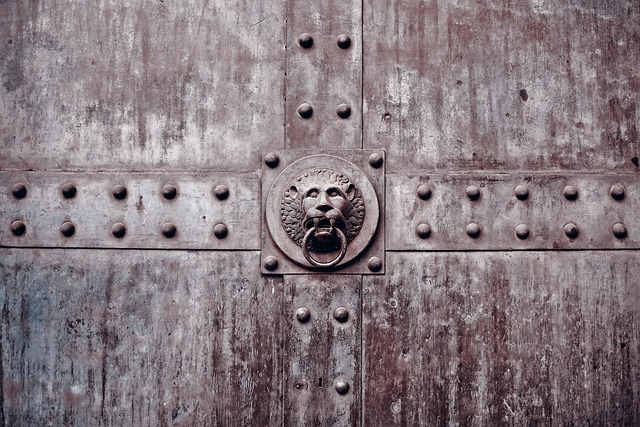Exterior door replacement is a strategic move for homeowners aiming to boost energy efficiency and reduce utility costs. Old doors can cause significant heat loss, but swapping them with energy-efficient models acts as an insulator, keeping homes comfortable year-round. Advanced technologies like weatherstripping, double-paned glass, and airtight seals minimize heat transfer, decrease the carbon footprint, and contribute to a sustainable future. Choosing the right door type—such as insulated core, fiberglass, or wooden low-E coated doors—ensures optimal insulation and long-term cost savings on energy bills. Professional installation and regular maintenance are key to maximizing performance and minimizing air leakage for a comfortable and environmentally friendly home.
“Elevate your home’s energy efficiency with the simple yet powerful upgrade of energy-efficient doors. In today’s quest for sustainable living, understanding the impact of exterior door replacement on energy conservation is paramount. This article guides you through the process, from recognizing the potential energy savings to selecting the ideal materials and installation techniques.
By exploring these aspects, homeowners can effectively improve insulation, reduce heating/cooling costs, and contribute to a greener environment.”
Understanding the Impact of Exterior Door Replacement on Energy Efficiency
Exterior door replacement is a significant step in enhancing your home’s energy efficiency, often with surprising results. The doors we choose can significantly impact our heating and cooling costs, as they are one of the primary pathways for heat transfer. Old or poorly installed exterior doors can lead to substantial energy losses; replacing them with energy-efficient models can act as a powerful insulator, keeping your home warm during winters and cool in summers.
This simple upgrade plays a crucial role in reducing your carbon footprint and lowering utility bills. Advanced door technologies offer improved insulation through various features like weatherstripping, double or triple paned glass, and airtight seals, ensuring minimal heat escape or entry. By investing in energy-efficient exterior door replacement, you’re not just making your home more comfortable; you’re also contributing to a more sustainable future.
The Role of Insulation in Energy-Efficient Doors
In the quest for energy efficiency, doors play a pivotal role, especially when it comes to insulation. Energy-efficient doors are designed with advanced insulation technologies that significantly reduce heat transfer, keeping your home comfortable while minimizing energy consumption. This is particularly crucial for exterior door replacement, as these entry points can account for a substantial portion of unwanted heat loss or gain.
The insulation in these doors acts as a barrier, trapping warm air during winters and preventing hot air from entering during summers. By enhancing the overall energy efficiency of your home, these doors contribute to lower heating and cooling costs, making them an attractive option for homeowners looking to reduce their carbon footprint and save on utility bills.
Types of Energy-Efficient Door Materials and Their Benefits
When considering an exterior door replacement, energy-efficient materials are a smart choice for homeowners looking to improve insulation and reduce heating/cooling costs. Common options include insulated core doors, fiberglass doors, and wooden doors with low-E coatings. Insulated core doors use a foam or air-filled core that provides excellent insulation, significantly reducing heat transfer and keeping your home comfortable. Fiberglass doors are known for their durability and low thermal conductivity, making them an effective barrier against extreme temperatures. Wooden doors equipped with low-E (low emissivity) coatings reflect heat back into the house during winter and keep it out in summer, enhancing energy efficiency without compromising aesthetics.
Each material offers unique benefits tailored to different climates and personal preferences. Insulated core doors excel in cold environments, while fiberglass performs better in regions with fluctuating temperatures. Wooden low-E coated doors are versatile and suit a wide range of conditions, offering both style and savings. Choosing the right door type ensures not only optimal insulation but also long-term cost savings on energy bills, making your home more comfortable and environmentally friendly.
How Energy-Efficient Doors Reduce Heating and Cooling Costs
Energy-efficient doors play a pivotal role in enhancing insulation and cutting down on heating and cooling expenses. These doors are designed with advanced technologies that seal gaps and minimize air leakage, preventing hot or cold air from escaping. During winter, they keep indoor heat in, reducing the workload on heating systems. Similarly, in summer, they prevent warm air from entering, thereby lowering cooling costs.
By investing in energy-efficient exterior door replacement, homeowners can expect significant savings on utility bills over time. This is because these doors significantly reduce energy transfer through the doors, creating a more comfortable indoor environment and contributing to sustainability.
Tips for Selecting and Installing the Best Energy-Efficient Exterior Door
When considering an exterior door replacement, energy efficiency should be your top priority. Look for doors labeled with a high Energy Star rating, which indicates superior insulation and weatherstripping that seals out drafts. Choose materials like fiberglass or foam-core that offer excellent thermal resistance. Also, ensure proper installation by hiring professionals who can seal gaps around the door frame for maximum effectiveness.
Consider additional features such as low-E glass, which reflects heat back into your home during winter and keeps it out in summer, further enhancing energy savings. Double-check the door’s swing direction to avoid problematic weather patterns and ensure optimal performance. Remember that even with an energy-efficient door, proper maintenance—like regular cleaning of weatherstripping and reapplication of caulk—is crucial for ongoing insulation benefits and cost savings on your heating and cooling bills.
Energy-efficient doors are a smart investment for any homeowner looking to improve their home’s insulation and reduce heating/cooling costs. By understanding the impact of exterior door replacement, utilizing effective insulation strategies, and selecting suitable materials, you can create a more comfortable living space while minimizing energy consumption. Following the tips outlined in this article will help guide you through the process of choosing and installing the best energy-efficient exterior door for your needs.
